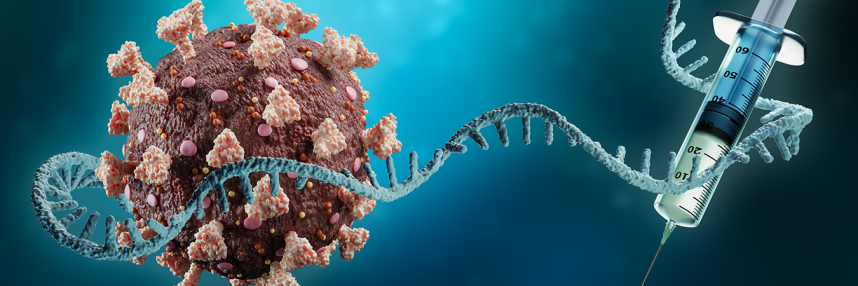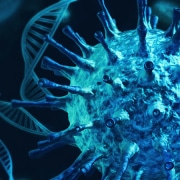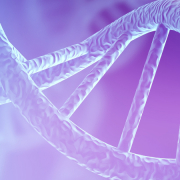Why mRNA vaccines aren’t gene therapies
We bust another Covid-19 myth – this time about how mRNA vaccines work – in our latest blog post
As people in the UK continue to receive Covid-19 vaccines, the subject of how and why they work is being widely discussed online. Some people are promoting the idea that RNA-based vaccines – including the UK-approved Pfizer-BioNTech and Moderna vaccines – are a form of gene therapy, but this isn’t accurate.
Read on as we break down the science to find the truth behind the myth.
RNA: a closer look
RNA is closely related to DNA and performs different but equally important functions. While our genetic information is stored as DNA in the cell nucleus, RNA acts as an intermediary, allowing the genes to be expressed.
When a gene is expressed, it is copied into RNA. This is known as a messenger RNA (mRNA) – the type used in the Pfizer and Moderna vaccines. The mRNA travels out of the cell nucleus to be used as a template to make a protein. Once the protein is made, the mRNA gets broken down.
So how do mRNA vaccines work, exactly?
How the vaccines work
All of the Covid-19 vaccines approved in the UK work by presenting a single protein that appears on the surface of the SARS-CoV-2 virus – known as the ‘spike protein’ – to the body’s immune system.
This allows the body to develop antibodies against the protein, so that if the body encounters the same protein again (notably, when a person is infected with the virus), then the immune system can react much more quickly. This process mimics the way our bodies react to many infections that we would encounter naturally.
Although all of the vaccines work by exploiting the spike protein, the way they do so is different.
The Oxford-AstraZeneca vaccine is a type of vaccine called a viral vector. It works by using a harmless virus that has been altered to have the SARS-CoV-2 protein on its surface.
The Pfizer-BioNTech and Moderna mRNA vaccines use a different approach. Instead of the vaccine containing the protein itself, it contains instructions about how to make the protein, so that the cells in our bodies can manufacture it.
The mRNA is packaged in a capsule called a lipid nanoparticle, which acts as a delivery vehicle to allow the mRNA to safely enter the cells in the body. From there, the mRNA is treated the same as any other – it is used by the cells as a template to build the protein and is then broken down. After the spike protein is manufactured by the vaccinated cell, it causes an immune response in the same way as traditional vaccines.
As mRNAs are broken down by the cell after they have been used, the RNA from the vaccine does not persist in cells. It is helpful to think of the mRNA vaccine has being a one-time set of instructions that the body then ‘forgets’, and this is very different to how gene therapies work.
Gene therapies vs mRNA therapies
Gene therapies involve making deliberate changes to a patient’s DNA in order to cure or alleviate a genetic condition. This can be by adding a functional copy of a gene, disabling a gene that makes a faulty product or changing gene activation.
The mRNA from the vaccines does not enter the cell nucleus or interact with the DNA at all, so it does not constitute gene therapy.
Gene therapies can have long-lasting effects because they permanently change the cell’s DNA, with these changes being inherited by any daughter cells that result if the cell divides. In contrast, mRNAs are always transitory and are not inherited by daughter cells, making them ideal for use in vaccines.
Although mRNA therapies have been the subject of clinical trials for many years, their role in the fight against Covid-19 has only accelerated interest in their usefulness to combat other conditions, including rare diseases and cancer.
Still unsure about what’s fact and what’s fiction? Find the answers your way and chart your genomics learning journey!
–









